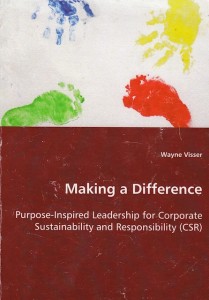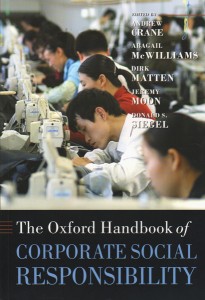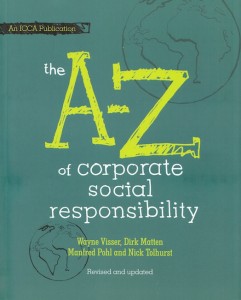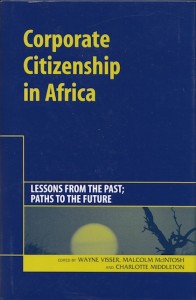CSR 2.0 as the New DNA of Business
Blog by Wayne Visser
Part 6 of 13 in the Age of Responsibility Blog Series for 3BL Media.
By May 2008, it was clear to me that the evolutionary concept of Web 2.0 held many lessons for CSR, and I began to develop my thinking around CSR 2.0. It quickly became clear, however, that a metaphor can only take you so far. What was needed was a set of principles against which we could test CSR. These went through a few iterations, but I eventually settled on five, which form a kind of mnemonic for CSR 2.0: Creativity (C), Scalability (S), Responsiveness (R), Glocality (2) and Circularity (0). These principles, which will be explored in detail in the next chapters, can be described briefly as follows:
Creativity – The problem with the current obsession with CSR codes and standards (including the new ISO 26000 standard) is that it encourages a tick-box approach to CSR. But our social and environmental problems are complex and intractable. They need creative solutions, like Free-play’s wind-up technology or Vodafone’s M-Pesa money transfer scheme.
Scalability – The CSR literature is liberally sprinkled with charming case studies of truly responsible and sustainable projects. The problem is that so few of them ever go to scale. We need more examples like Wal-Mart ‘choice editing’ by converting to organic cotton, Tata creating the affordable eco-efficient Nano car or Muhammad Yunus’s Grameen microfinance model.
Responsiveness – More cross-sector partnerships and stakeholder-driven approaches are needed at every level, as well as more uncomfortable, transformative responsiveness, which questions whether particular industries, or the business model itself, are part of the solution or part of the problem. A good example of responsiveness is the Corporate Leaders Group on Climate Change.
Glocality – This means ‘think global, act local’. In a complex, interconnected, globalising world, companies (and their critics) will have to become far more sophisticated in combining international norms with local contexts, finding local solutions that are culturally appropriate, without forsaking universal principles. We are moving from an ‘either-or’ one-size-fits-all world to a ‘both-and’ strength-in-diversity world.
Circularity – Our global economic and commercial system is based on a fundamentally flawed design, which acts as if there are no limits on resource consumption or waste disposal. Instead, we need a cradle-to-cradle approach, closing the loop on production and designing products and processes to be inherently ‘good’, rather than ‘less bad’, as Shaw Carpets does.
I believe that CSR 2.0 – or Systemic CSR (I also sometimes call it Radical CSR or Holistic CSR, so use whichever you prefer) – represents a new model of CSR. In one sense, it is not so different from other models we have seen before. We can recognise echoes of Archie Carroll’s CSR Pyramid, Ed Freeman’s Stakeholder Theory, Donna Wood’s Corporate Social Performance, John Elkington’s Triple Bottom Line, Stuart Hart and C.K. Prahalad’s Bottom of the Pyramid, Michael Porter’s Strategic CSR and the ESG approach of Socially Responsible Investment, to mention but a few. But that is really the point – it integrates what we have learned to date. It presents a holistic model of CSR.
The essence of the CSR 2.0 DNA model are …
Continue reading
[button size=”small” color=”blue” style=”download” new_window=”false” link=”http://www.waynevisser.com/wp-content/uploads/2012/04/blog_csr2_new_dna_wvisser.pdf”]Pdf[/button] CSR 2.0: New DNA (blog)
Related websites
[button size=”small” color=”blue” style=”tick” new_window=”false” link=”http://www.csrinternational.org”]Link[/button] CSR International (website)
[button size=”small” color=”blue” style=”tick” new_window=”false” link=”http://www.waynevisser.com/books/the-age-of-responsibility”]Link[/button] The Age of Responsibility (book)
Cite this blog
Visser, W. (2012) CSR 2.0 as the New DNA of Business, Wayne Visser Blog Briefing, 13 March 2012.




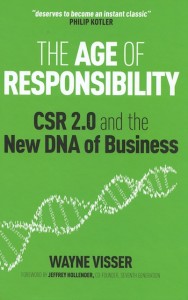 If we expect the right to fair treatment, we have a responsibility to respect the rule of law and honour the principle of reciprocity. If we believe in the right to have our basic needs met, we have the responsibility to respond when poverty denies those rights to others.
If we expect the right to fair treatment, we have a responsibility to respect the rule of law and honour the principle of reciprocity. If we believe in the right to have our basic needs met, we have the responsibility to respond when poverty denies those rights to others.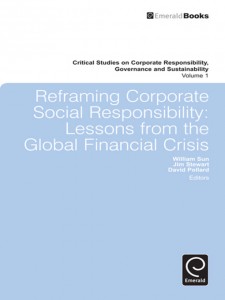
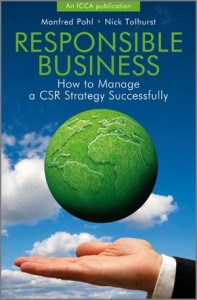

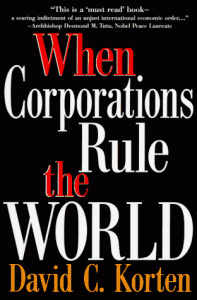

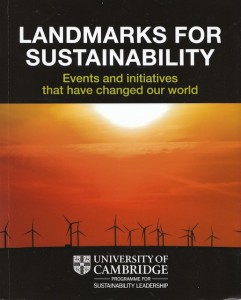 Scientists have long been aware of the earth’s extreme temperature variations, with the last major ice age ending about 10,000 years ago. However, in 1824 Jean-Baptiste Fourier discovered a global warming (or greenhouse) effect, and in 1861, the Irish physicist John Tyndall carried out key research on carbon dioxide (CO2) and heat absorption.
Scientists have long been aware of the earth’s extreme temperature variations, with the last major ice age ending about 10,000 years ago. However, in 1824 Jean-Baptiste Fourier discovered a global warming (or greenhouse) effect, and in 1861, the Irish physicist John Tyndall carried out key research on carbon dioxide (CO2) and heat absorption.
